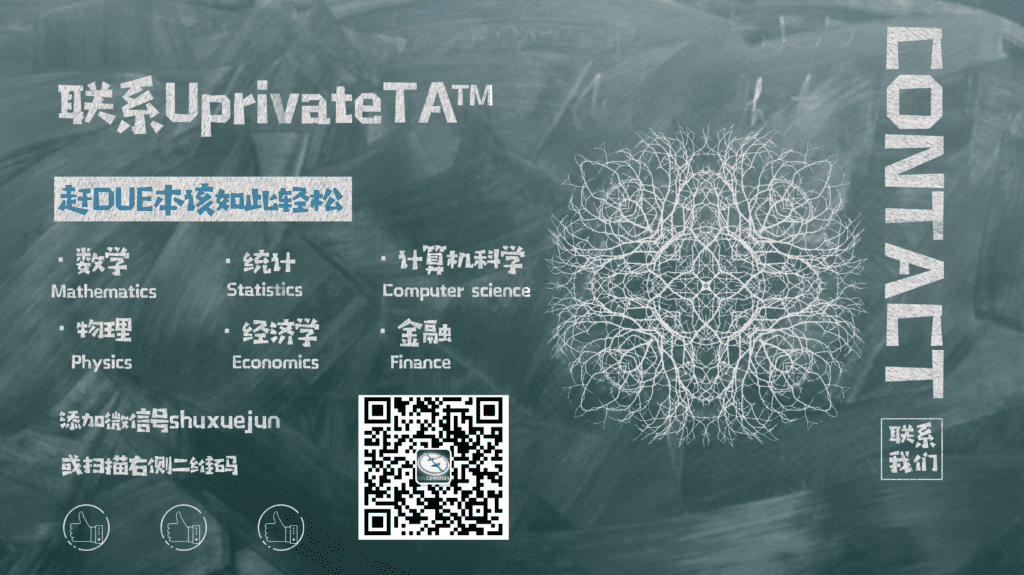
如果你也在 怎样代写热力学Thermodynamics ENGRD2210这个学科遇到相关的难题,请随时右上角联系我们的24/7代写客服。热力学Thermodynamics是物理学的一个分支,涉及热、功和温度,以及它们与能量、熵以及物质和辐射的物理特性的关系。这些数量的行为受热力学四大定律的制约,这些定律使用可测量的宏观物理量来传达定量描述,但可以用统计力学的微观成分来解释。热力学适用于科学和工程中的各种主题,特别是物理化学、生物化学、化学工程和机械工程,但也适用于其他复杂领域,如气象学。
热力学Thermodynamics从历史上看,热力学的发展源于提高早期蒸汽机效率的愿望,特别是通过法国物理学家萨迪-卡诺(1824年)的工作,他认为发动机的效率是可以帮助法国赢得拿破仑战争的关键。苏格兰-爱尔兰物理学家开尔文勋爵在1854年首次提出了热力学的简明定义,其中指出:”热力学是关于热与作用在身体相邻部分之间的力的关系,以及热与电的关系的课题。” 鲁道夫-克劳修斯重述了被称为卡诺循环的卡诺原理,为热学理论提供了更真实、更健全的基础。他最重要的论文《论热的运动力》发表于1850年,首次提出了热力学的第二定律。1865年,他提出了熵的概念。1870年,他提出了适用于热的维拉尔定理。
热力学Thermodynamics代写,免费提交作业要求, 满意后付款,成绩80\%以下全额退款,安全省心无顾虑。专业硕 博写手团队,所有订单可靠准时,保证 100% 原创。最高质量的热力学Thermodynamics作业代写,服务覆盖北美、欧洲、澳洲等 国家。 在代写价格方面,考虑到同学们的经济条件,在保障代写质量的前提下,我们为客户提供最合理的价格。 由于作业种类很多,同时其中的大部分作业在字数上都没有具体要求,因此热力学Thermodynamics作业代写的价格不固定。通常在专家查看完作业要求之后会给出报价。作业难度和截止日期对价格也有很大的影响。
avatest™帮您通过考试
avatest™的各个学科专家已帮了学生顺利通过达上千场考试。我们保证您快速准时完成各时长和类型的考试,包括in class、take home、online、proctor。写手整理各样的资源来或按照您学校的资料教您,创造模拟试题,提供所有的问题例子,以保证您在真实考试中取得的通过率是85%以上。如果您有即将到来的每周、季考、期中或期末考试,我们都能帮助您!
在不断发展的过程中,avatest™如今已经成长为论文代写,留学生作业代写服务行业的翘楚和国际领先的教育集团。全体成员以诚信为圆心,以专业为半径,以贴心的服务时刻陪伴着您, 用专业的力量帮助国外学子取得学业上的成功。
•最快12小时交付
•200+ 英语母语导师
•70分以下全额退款
想知道您作业确定的价格吗? 免费下单以相关学科的专家能了解具体的要求之后在1-3个小时就提出价格。专家的 报价比上列的价格能便宜好几倍。
我们在物理Physical代写方面已经树立了自己的口碑, 保证靠谱, 高质且原创的物理Physical代写服务。我们的专家在热力学Thermodynamics代写方面经验极为丰富,各种热力学Thermodynamics相关的作业也就用不着说。

物理代写|热力学代写Thermodynamics代考|What Is Exergy Good For?
While the Carnot efficiency in Equation $3.15$ poses a fundamental upper limit for the thermal efficiency of a heat engine, practical machines of course exhibit lower efficiencies, and it is the art of the engineer to come as close to the ideal limit as possible with appropriate regard to economic constraints. The resulting actual efficiency is a product of two factors, namely the efficiency determined by the Second Law and, of necessity, a factor that represents the departures of the real machine from perfection. To balance better the actual technical achievement against what is possible in principle and to identify sources within a process where useful energy is destroyed or wasted, it has turned out to be beneficial to introduce a specific term for the useful energy. According to a suggestion of Rant (1956), this property is called exergy $E$. The term exergy does not introduce anything physically new that is different from the Second Law, yet it has proven to be a useful concept for technical purposes.
Thus, exergy is defined as that part of energy that – relative to a given reference state-can, without any restriction, be transformed into any other form of energy. Because the work that can be extracted from a process is the form of energy that is of primary interest, an alternative formulation of the definition is as follows: exergy is that part of energy that – relative to a given reference state – can, without any restriction, be transformed into useful work.
It is important to note that the definition relies on the specification of a reference state, and this is always taken to be the environment when we consider exergy. For example, a cold reservoir with temperature below ambient contains exergy or useful work. However, when a system is brought to the pressure and temperature of the environment, no potential exists for the extraction of useful work. Thus, the environmental state is a dead state and in this context its temperature is designated as $T_0$. An instructive and more detailed discussion of the term’s immediate surroundings and environment is given by Çengel and Boles (2006).
To be complete, the other part of the energy, namely the one that in principle cannot be transformed into useful work, should also have a name: It is termed anergy B. Thus: energy $=$ exergy $E+\operatorname{anergy} B$.
物理代写|热力学代写Thermodynamics代考|What Is the Minimum Work Required to Separate Air into Its Constituents?
To tackle the problem, it might seem straightforward to look for one or more processes that promise to separate air – or more generally a mixture of gases – and then seek to find the optimal conditions for each process under which they require the minimum amount of work. In general, it may be difficult to find any such process, and one can never be sure that the result obtained is actually the optimal choice; it may merely be the best from those selected. Thus, it is best to consider the problem from the other end: What is the amount of useful energy that is destroyed by the mixing of gases, or what is the exergy loss $E_{\text {loss }}$ in such a process (See Question 3.8).
To simplify the analysis without losing the major thrust of the argument we consider air in the first instance as a mixture of only nitrogen and oxygen $\left(y_{\mathrm{N}2}=0.79, y{\mathrm{O}_2}=0.21\right)$ and expand the problem to a more general case later. We further restrict the problem to treating dry air and neglect the varying humidity. When nitrogen and oxygen are mixed at standard conditions $\left(T=298.15 \mathrm{~K}, p=10^5 \mathrm{~Pa}\right.$ ), these constituents may be treated as ideal gases. Thus, there is no enthalpy of mixing (nor a change in internal energy), and the mixing at constant pressure and temperature occurs in an adiabatic manner. If we imagine that the two gases are held separately in a single rigid vessel and that we then remove the partition (as shown in Figure 3.6), the system undergoes a diffusion process toward a new equilibrium. This diffusion process is irreversible and accompanied by a rise of entropy (see Equation 2.57)
$$
\Delta S_{\text {gen }}=-n R \sum_i y_i \ln y_{i^{\prime}}
$$
where $n$ is the total amount of substance and $y$ represents the mole fractions of species in the gas phase. The amount of useful energy destroyed by such a process, or in other words the exergy loss, may be generally described by $E_{\text {loss }}=T_0 \Delta S_{\text {gen, where }} T_0$ is the temperature of the surroundings to give
$$
E_{\text {loss }}=-n T_0 R \sum_i y_i \ln y_i .
$$

热力学代写
物理代写|热力学代写热力学代考|火用的好处是什么?
而方程中的卡诺效率 $3.15$ 为热机的热效率提供了一个基本的上限,实际的机器当然表现出较低的效率,在适当考虑到经济限制的情况下,尽可能接近理想的极限是工程师的艺术。由此产生的实际效率是两个因素的乘积,一个是由第二定律决定的效率,另一个必然是代表真正机器偏离完美的因素。为了更好地平衡实际技术成就与原则上可能达到的水平,并在一个过程中确定有用能量被破坏或浪费的来源,引入一个专门的有用能量术语是有益的。根据Rant(1956)的建议,这种性质被称为火用 $E$。火用这个术语并没有引入任何与第二定律不同的物理新概念,但它已被证明是技术上有用的概念。因此,火用被定义为相对于给定的参考状态,可以不受任何限制地转化为任何其他形式的能量的那部分能量。因为可以从一个过程中提取的功是最重要的能量形式,因此定义的另一种表述如下:火用是相对于给定的参考状态,可以不受任何限制地转化为有用功的那部分能量。需要注意的是,定义依赖于参考状态的规范,当我们考虑火用时,这总是被认为是环境。例如,温度低于环境温度的冷热源包含火用能或有用功。然而,当一个系统被置于环境的压力和温度下时,就不存在提取有用功的潜力。因此,环境状态是死状态,在这种情况下,它的温度被指定为 $T_0$。Çengel和Boles(2006)给出了关于该术语的直接环境和环境的更有启发性和详细的讨论。完整地说,能量的另一部分,即原则上不能转化为有用功的部分,也应该有一个名字:它被称为能量b $=$ 火用能 $E+\operatorname{anergy} B$.
物理代写|热力学代写热力学代考|将空气分离成其组分所需的最小功是多少?
要解决这个问题,似乎很简单:寻找一种或多种有望分离空气(或更普遍的气体混合物)的工艺,然后为每个工艺寻找所需工作量最小的最佳条件。一般来说,可能很难找到任何这样的过程,而且人们永远无法确定所获得的结果实际上是最佳选择;它可能只是被选中的人中最好的。因此,最好从另一个角度来考虑这个问题:气体混合所破坏的有用能量是多少,或者在这样的过程中火用损失是多少$E_{\text {loss }}$(见问题3.8)。
为了简化分析而又不失去论证的主要主旨,我们首先把空气看作仅仅是氮和氧的混合物$\left(y_{\mathrm{N}2}=0.79, y{\mathrm{O}2}=0.21\right)$,然后把这个问题扩展到更一般的情况。我们进一步将问题局限于处理干燥空气而忽略了湿度的变化。当氮和氧在标准条件下混合$\left(T=298.15 \mathrm{~K}, p=10^5 \mathrm{~Pa}\right.$),这些成分可视为理想气体。因此,没有混合的焓(也没有热力学能的变化),在恒定的压力和温度下,混合以绝热的方式发生。如果我们想象这两种气体分别保存在一个单一的刚性容器中,然后我们移除隔板(如图3.6所示),系统将经历一个扩散过程,以达到一个新的平衡。这个扩散过程是不可逆的,并伴随着熵的上升(见式2.57)
$$
\Delta S{\text {gen }}=-n R \sum_i y_i \ln y_{i^{\prime}}
$$
,其中$n$是物质的总量,$y$表示气相中物种的摩尔分数。这样一个过程所破坏的有用能量的量,或者换句话说火用损失,一般可以用$E_{\text {loss }}=T_0 \Delta S_{\text {gen, where }} T_0$来描述,即周围的温度给
$$
E_{\text {loss }}=-n T_0 R \sum_i y_i \ln y_i .
$$

物理代写|热力学代写Thermodynamics代考 请认准UprivateTA™. UprivateTA™为您的留学生涯保驾护航。
微观经济学代写
微观经济学是主流经济学的一个分支,研究个人和企业在做出有关稀缺资源分配的决策时的行为以及这些个人和企业之间的相互作用。my-assignmentexpert™ 为您的留学生涯保驾护航 在数学Mathematics作业代写方面已经树立了自己的口碑, 保证靠谱, 高质且原创的数学Mathematics代写服务。我们的专家在图论代写Graph Theory代写方面经验极为丰富,各种图论代写Graph Theory相关的作业也就用不着 说。
线性代数代写
线性代数是数学的一个分支,涉及线性方程,如:线性图,如:以及它们在向量空间和通过矩阵的表示。线性代数是几乎所有数学领域的核心。
博弈论代写
现代博弈论始于约翰-冯-诺伊曼(John von Neumann)提出的两人零和博弈中的混合策略均衡的观点及其证明。冯-诺依曼的原始证明使用了关于连续映射到紧凑凸集的布劳威尔定点定理,这成为博弈论和数学经济学的标准方法。在他的论文之后,1944年,他与奥斯卡-莫根斯特恩(Oskar Morgenstern)共同撰写了《游戏和经济行为理论》一书,该书考虑了几个参与者的合作游戏。这本书的第二版提供了预期效用的公理理论,使数理统计学家和经济学家能够处理不确定性下的决策。
微积分代写
微积分,最初被称为无穷小微积分或 “无穷小的微积分”,是对连续变化的数学研究,就像几何学是对形状的研究,而代数是对算术运算的概括研究一样。
它有两个主要分支,微分和积分;微分涉及瞬时变化率和曲线的斜率,而积分涉及数量的累积,以及曲线下或曲线之间的面积。这两个分支通过微积分的基本定理相互联系,它们利用了无限序列和无限级数收敛到一个明确定义的极限的基本概念 。
计量经济学代写
什么是计量经济学?
计量经济学是统计学和数学模型的定量应用,使用数据来发展理论或测试经济学中的现有假设,并根据历史数据预测未来趋势。它对现实世界的数据进行统计试验,然后将结果与被测试的理论进行比较和对比。
根据你是对测试现有理论感兴趣,还是对利用现有数据在这些观察的基础上提出新的假设感兴趣,计量经济学可以细分为两大类:理论和应用。那些经常从事这种实践的人通常被称为计量经济学家。
MATLAB代写
MATLAB 是一种用于技术计算的高性能语言。它将计算、可视化和编程集成在一个易于使用的环境中,其中问题和解决方案以熟悉的数学符号表示。典型用途包括:数学和计算算法开发建模、仿真和原型制作数据分析、探索和可视化科学和工程图形应用程序开发,包括图形用户界面构建MATLAB 是一个交互式系统,其基本数据元素是一个不需要维度的数组。这使您可以解决许多技术计算问题,尤其是那些具有矩阵和向量公式的问题,而只需用 C 或 Fortran 等标量非交互式语言编写程序所需的时间的一小部分。MATLAB 名称代表矩阵实验室。MATLAB 最初的编写目的是提供对由 LINPACK 和 EISPACK 项目开发的矩阵软件的轻松访问,这两个项目共同代表了矩阵计算软件的最新技术。MATLAB 经过多年的发展,得到了许多用户的投入。在大学环境中,它是数学、工程和科学入门和高级课程的标准教学工具。在工业领域,MATLAB 是高效研究、开发和分析的首选工具。MATLAB 具有一系列称为工具箱的特定于应用程序的解决方案。对于大多数 MATLAB 用户来说非常重要,工具箱允许您学习和应用专业技术。工具箱是 MATLAB 函数(M 文件)的综合集合,可扩展 MATLAB 环境以解决特定类别的问题。可用工具箱的领域包括信号处理、控制系统、神经网络、模糊逻辑、小波、仿真等。